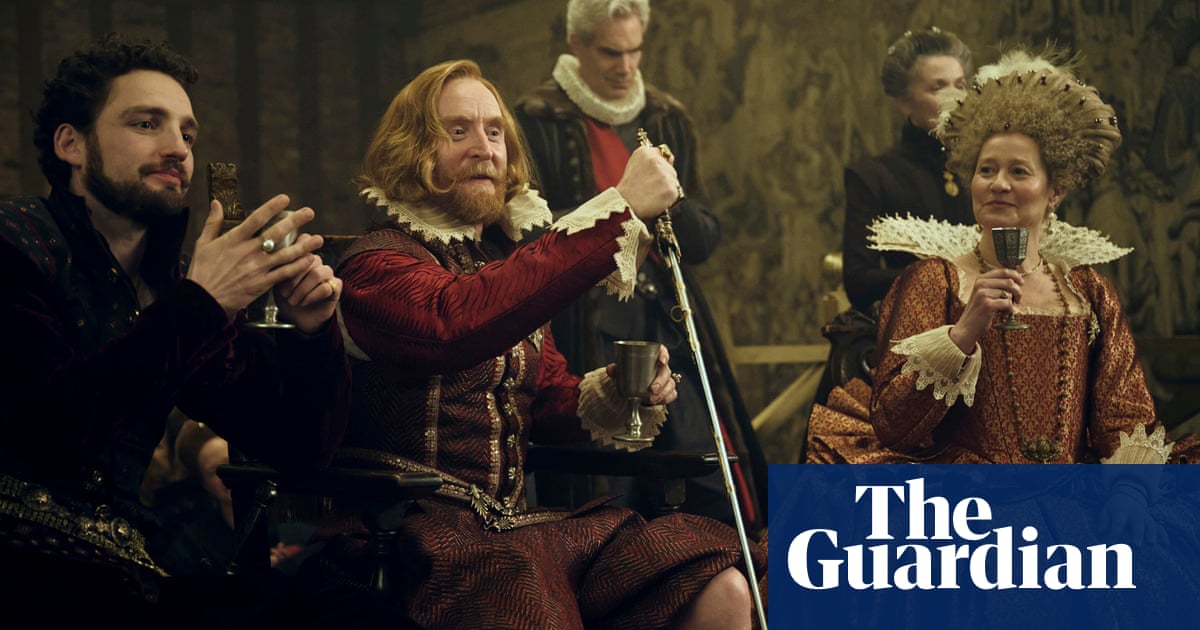In 1617, King James I of England addressed the privy council about the young man whom he had recently, spectacularly, promoted. “I, James, am neither God nor an angel, but a man like any other,” he told them. “Therefore I act like a man.
“You may be sure that I love the Earl of Buckingham more than anyone else … Christ had his John, and I have my George.”
“His” George was George Villiers, who just a few years earlier had been the lowly second son of a minor gentleman from Leicestershire, and was now an earl and one of the king’s closest aides. But as James’s speech suggested, he was much more than that.
For several years, most historians accept, Villiers had been not only the king’s favourite courtier but his lover – a man whom James would later describe as his “sweet child and wife”, writing that he would rather be banished “than live a sorrowful widow’s life without you”.
Or as a contemporary French poem put it: “It is well known that the King of England / Fucks the Duke of Buckingham.”
The relationship between the two men is the subject of a new Sky Atlantic drama, Mary and George, which also dramatises the role played by Villiers’ mother, Mary, in plotting her son’s social ascent by means of the king’s bed.
Starring Julianne Moore and Nicholas Galitzine as the wildly ambitious mother and son, it’s an exuberantly filthy romp through the Jacobean court, described by the Guardian’s Lucy Mangan as “more fun than I can possibly tell you”.
But how much of it is true? Sandwiched between the reigns of Elizabeth I, who defeated the Armada, and his son Charles I, who lost his head in a civil war, the comparatively peaceful tenure of James I of England and VI of Scotland is often overlooked, with the king arguably best known today for his obsession with witches and the bible translation that bears his name.
The story of George Villiers paints a more colourful – and tender – picture of the king, revealing him to be one of the most prominent figures in British LGBTQ+ history.
That James had many relationships with men has always been known, but history has sometimes been coy about their nature, says Steven Veerapen, a teaching fellow at the University of Strathclyde, whose most recent book concerns James’s “lavish life”. “There was, for a very long time, a hesitancy to really talk about it, it would just be said that he had these ‘favourites’ and that he was foolishly devoted to them – and we won’t go into what else might have happened.”
An abundance of letters clearly point to passionately physical relationships, he says – this despite the fact that the king wrote explicit condemnations of the act of sodomy. “That doesn’t mean he wasn’t doing it himself … You’re the king. Why not? Do what you like.”
Made King of Scotland when he was barely one following the imprisonment and murder respectively of his parents, Mary Queen of Scots and Lord Darnley, James was raised in a perilous environment. He was probably sexually groomed as a child by an older male family member, and later took a succession of young male lovers. He appears to have been close, however, to the woman he would go on to marry, Anne of Denmark, says Veerapen: “He was no heir and a spare man – he had multiple [pregnancies] with her – so they had a fairly active sex life.”
James assumed the English throne in 1603 where his head was turned by yet more handsome young chaps, and eventually, designedly, by Villiers – described as “the handsomest bodied man in England”. The drama suggests this was Mary’s doing; Veerapen argues it was the act of exasperated aides wanting to oust the king’s previous favourite Robert Carr, Earl of Somerset.
James seems to have genuinely loved the much younger Villiers – and made little attempt to hide it. As one courtier noted, their “wanton looks and wanton gestures” and kisses “so lascivious … in public and upon the theatre” prompted observers to raise eyebrows about what was going on in private.
“We can see that there is a very passionate, intimate, physical relationship between them. But did Villiers reciprocate that love?” asks Matthew Storey, a collections curator at Historic Royal Palaces who has led its research into LGBTQ+ royal histories. “Or was he in it for what he could gain in terms of power, wealth and possessions?”
Modern conceptions of sexuality are still influenced by the Victorian morals, says Storey; in the Jacobean period, by contrast, observers were less concerned with what the king was doing than who he was doing it with – and the shifts in power that might result.
“You’ve always got to remember that power is an essential component of royal relationships. Monarchs can’t have what we think of as normal relationships, because the power is invested in them – and those around them want to get some of that power.
“We can’t understand royal relationships without relating it to power and politics.”
∎